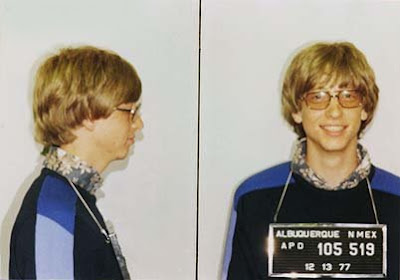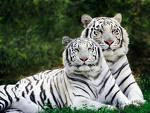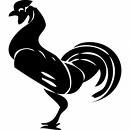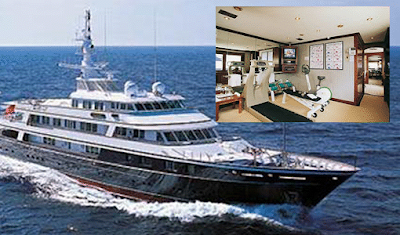Tuesday, February 23, 2010
Children Grow And Develop
Developmental Milestones For Your Child's First Five Years
Children grow and develop at different rates. While their pathways through childhood differ, most pass a set of predictable milestones along the way. The information presented here offers a map that can help you follow your child's journey. Our map divides the developmental milestones into four areas:
Physical Development
Social & Emotional Development
Thinking Skills
Communication Skills
In reality, these areas overlap, as development in one area is reinforced and enhanced by growth in others. The milestones suggested for each area offer examples of the developmental leaps that young children make. These are not complete lists.As you follow this map, keep in mind that each child develops differently and that an individual child may develop more quickly in one area than in another.
Tips:
How To Get 5 - 12 Year Olds Behave And Do As Theyre Told Provides A Practical Down-to-earth Strategy.Click Here!
Parent's Guide To Children's Behaviour Will Not Only Help You To Make Immediate Improvements In Their Behaviour But Show You How To Make Those Improvements Permanent.Click Here!
Bedtime Stories With Music Therapy Designed To Relieve Anxiety, Stress And Insomnia In Children, Gently Leading Them To A Magical World Where Only Love And Happiness Surround Him, In A Deep And Relaxing Sleep.Click Here!
The Tips Help Parents Develop Personal Safety Plans.Click Here!
'Starting Your Own Day Care Business'.Click Here!
recommended articles: prev(s)1 2 3 4 5 6 7 8 9 10 11 12 13 14 back
Children's Determination To Master Movement
# Repeat body movements, and enjoy doing so
Child Development For Parents
for early care providers
Social and emotional milestones are often harder to pinpoint than signs of physical development. This area emphasizes many skills that increase self-awareness and self-regulation. Research shows that social skills and emotional development (reflected in the ability to pay attention, make transitions from one activity to another, and cooperate with others) are a very important part of school readiness.
Age Milestones
The first year From the start, babies eagerly explore their world-and that includes themselves and other people.
Birth to 3 months
 # Begin to realize she is a separate person from others and learn how body parts, like arms and legs, are attached
# Begin to realize she is a separate person from others and learn how body parts, like arms and legs, are attached6 months to 9 months
 # As they near age one, imitation and self-regulation gain importance. Most babies can: Feed themselves finger foods
# As they near age one, imitation and self-regulation gain importance. Most babies can: Feed themselves finger foods # Children become more aware of themselves and their ability to make things happen. They express a wider range of emotions and are more likely to initiate interaction with other people. At this stage, most children: Recognize themselves in pictures or the mirror and smile or make faces at themselves
# Children become more aware of themselves and their ability to make things happen. They express a wider range of emotions and are more likely to initiate interaction with other people. At this stage, most children: Recognize themselves in pictures or the mirror and smile or make faces at themselves # Children begin to experience themselves as more powerful, creative "doers." They explore everything, show a stronger sense of self and expand their range of self-help skills. Self-regulation is a big challenge. Two-year-olds are likely to: Show awareness of gender identity
# Children begin to experience themselves as more powerful, creative "doers." They explore everything, show a stronger sense of self and expand their range of self-help skills. Self-regulation is a big challenge. Two-year-olds are likely to: Show awareness of gender identity # As their dexterity and self-help skills improve, 3-year-olds become more independent. Most can: Follow a series of simple directions
# As their dexterity and self-help skills improve, 3-year-olds become more independent. Most can: Follow a series of simple directions # Children become more interested in other children. They are now more likely to: Share toys, taking turns with assistance
# Children become more interested in other children. They are now more likely to: Share toys, taking turns with assistance # At this age, children are more aware of themselves as individuals. They: Show some understanding of moral reasoning (exploring ideas about fairness and good or bad behavior)
# At this age, children are more aware of themselves as individuals. They: Show some understanding of moral reasoning (exploring ideas about fairness and good or bad behavior)Developing Perceptual And Thinking Skills
Infants were once thought of as passive and unknowing. It was commonly believed that until they mastered language, young children were incapable of thinking or forming complex ideas. Today, we know otherwise. From the very start, young children are aware of their surroundings and interested in exploring them. Scientists from several fields have shown that from the first weeks of life, babies are active learners. They are busy gathering and organizing knowledge about their world. These milestones highlight young children's progress in developing perceptual and thinking skills.
Age Milestones
The first year
Birth to 3 months
 # Newborns begin right away to use and integrate their senses to explore their world. Most infants can: See clearly within 13 inches
# Newborns begin right away to use and integrate their senses to explore their world. Most infants can: See clearly within 13 inches # Using ingenious research methods, scientists have found that babies begin very early to have glimmers of how the world works. Even very young babies have been found to: Stare longer at "impossible" events (like ordinary objects suspended in midair)
# Using ingenious research methods, scientists have found that babies begin very early to have glimmers of how the world works. Even very young babies have been found to: Stare longer at "impossible" events (like ordinary objects suspended in midair) # Distinguish between inanimate and animate objects, and understand that inanimate objects must be propelled into motion by an external force
# Distinguish between inanimate and animate objects, and understand that inanimate objects must be propelled into motion by an external force # As they grow, children continue to explore how the world works and build on the conceptual leaps described above. At this age, most babies can: Understand that an object still exists even when it's not in view
# As they grow, children continue to explore how the world works and build on the conceptual leaps described above. At this age, most babies can: Understand that an object still exists even when it's not in view # Children at this age spend much of their time intently observing and imitating the actions of adults. Most can: Imitate adults' actions and language
# Children at this age spend much of their time intently observing and imitating the actions of adults. Most can: Imitate adults' actions and language # A lot of learning is done through a child's own exploration, and this really takes off at this age. Most children can: Respond to simple directions
# A lot of learning is done through a child's own exploration, and this really takes off at this age. Most children can: Respond to simple directions # As children have more experiences in the world, their analytic powers grow. For some time, they have been observing and mentally "sorting" objects according to their physical properties. Now most children can: Understand concepts like grouping and matching (for example, recognizing and matching colors)
# As children have more experiences in the world, their analytic powers grow. For some time, they have been observing and mentally "sorting" objects according to their physical properties. Now most children can: Understand concepts like grouping and matching (for example, recognizing and matching colors) # At this age, children actively seek information and new experiences from the people in their environment. Most can: Play with words, mimicking and creating sounds, and make rhymes
# At this age, children actively seek information and new experiences from the people in their environment. Most can: Play with words, mimicking and creating sounds, and make rhymesInfants Pay Close Attention To Language.
Long before children can say words or join them into sentences, they are active language learners. Within a few short years, young children go from newborns without language to excellent communicators and lively inventers and tellers of stories.
Age Milestones
The first year
# Listen to conversations
# Associate gestures with simple words and two-word phrases, like "hi" and "bye-bye"
 # Children are getting ready to talk. Around the first birthday, language production doubles. Many babies of this age: Understand the names of familiar people and objects
# Children are getting ready to talk. Around the first birthday, language production doubles. Many babies of this age: Understand the names of familiar people and objects# Say a few words
 # Children begin to learn many new words and begin to use simple phrases. Many children can: Understand many words, as well as simple phrases and directions ("Drink your juice")
# Children begin to learn many new words and begin to use simple phrases. Many children can: Understand many words, as well as simple phrases and directions ("Drink your juice") # Say a few words clearly, and a few dozen additional words so that family members can understand. The words denote important people and common objects, and a few prepositions such as "on," "in," or "under." Many can say "more" and "all gone."
# Say a few words clearly, and a few dozen additional words so that family members can understand. The words denote important people and common objects, and a few prepositions such as "on," "in," or "under." Many can say "more" and "all gone."# Point to common objects when they are named
# Respond to "what?" and "where?" questions
# Enjoy listening to stories and asking for favorite stories
# Recount events that happened that day
3 years to 4 years
 # Language usage becomes more complex. Most 3-year-olds can: Make themselves understood to strangers, despite some sound errors
# Language usage becomes more complex. Most 3-year-olds can: Make themselves understood to strangers, despite some sound errors# Use more complex grammar, such as plurals and past tense
 # Understand sentences involving time concepts (for example, "Grandma is coming tomorrow") and narrate past experiences
# Understand sentences involving time concepts (for example, "Grandma is coming tomorrow") and narrate past experiences4 years to 5 years
 # 4-year-olds use language not only to converse, but also to exchange information. Most can: Retell a story (but may confuse facts)
# 4-year-olds use language not only to converse, but also to exchange information. Most can: Retell a story (but may confuse facts)# Ask "when?" "how?" and "why?" questions
# Follow three unrelated commands appropriately
# Understand comparatives like loud, louder, loudest
# Listen to long stories (but may misinterpret the facts)
# Understand sequencing of events when clearly explained (for example, "First we plug the drain, then we run the water, and finally we take a bath")
Tips:
How To Make Breastfeeding Easy, Enjoyable And Successful. Show You How To Breastfeed Simply And Naturally, With Confidence.Click Here!
Moral Standards To Your Children Calmly And Without Arguments. Discuss Objective Moral Standards.Click Here!
related articles:
Childrens Determination
Child Development For Parents
Developing Perceptual And Thinking
Infants Pays Close Attention To Language
Philippines Light Rail Transit Public Transportation
The Manila Light Rail Transit System (Filipino: Sistema ng Magaan na Riles Panlulan ng Maynila),[citation needed] popularly known as the LRT, is a metropolitan rail system serving the Metro Manila area in the Philippines. Its twenty-nine stations over 28.8 kilometers (17.9 mi) of mostly elevated track form two lines. LRT Line 1, also called the Yellow Line, opened in 1984 and travels a north–south route. LRT Line 2, the Purple Line, was completed in 2004 and runs east–west.
The LRT is operated by the Light Rail Transit Authority (LRTA), a government-owned and controlled corporation under the authority of the Department of Transportation and Communications (DOTC). Along with the Manila Metro Rail Transit System (MRT, also called the Blue Line), and the Philippine National Railways (PNR), the LRT is part of Metro Manila's rail transportation infrastructure known as the Strong Republic Transit System (SRTS)
Stations
 The People Power Revolution was a series of nonviolent and prayerful mass street demonstrations in the Philippines that occurred in 1986. It was the inspiration for subsequent non-violent demonstrations around the world including those that ended the communist dictatorships of Eastern Europe.
The People Power Revolution was a series of nonviolent and prayerful mass street demonstrations in the Philippines that occurred in 1986. It was the inspiration for subsequent non-violent demonstrations around the world including those that ended the communist dictatorships of Eastern Europe.

 In 1990, it was voted by the BMW Tropical Beach Handbook as one of the best beaches in the world
In 1990, it was voted by the BMW Tropical Beach Handbook as one of the best beaches in the world
 Barasoain Church (also known as Our Lady of Mt. Carmel Parish) is a Roman Catholic church built in 1630 in Malolos City, Bulacan.
Barasoain Church (also known as Our Lady of Mt. Carmel Parish) is a Roman Catholic church built in 1630 in Malolos City, Bulacan.
 Laguna de Bay (Filipino: Lawa ng Bay; English: Laguna de Bay is the largest lake in the Philippines and the third largest freshwater lake in Southeast Asia
Laguna de Bay (Filipino: Lawa ng Bay; English: Laguna de Bay is the largest lake in the Philippines and the third largest freshwater lake in Southeast Asia
 Malacañan Palace, is the official residence of the President of the Philippines.
Malacañan Palace, is the official residence of the President of the Philippines.






















 >
>










































































